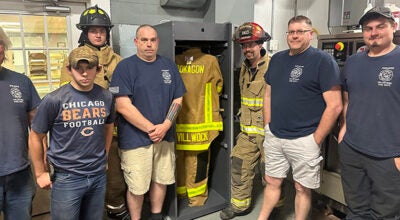Niles Community Schools address its internet safety policy
Published 9:20 am Thursday, August 13, 2009

Niles Community Schools address its internet safety policy
By JESSICA SIEFF
Niles Daily Star
This week the Niles Community School District announced a public hearing of its internet safety policy preceding the regularly scheduled meeting of the board of education on Monday, Aug. 17.
The hearing is routine, as is required when it comes to such a policy, applicable to both staff and students.
But with an increase in social networking, rising populations on sites such as MySpace, Facebook and Twitter, school districts like Niles as well as those across the country continue to walk the fine line of the world wide web – its benefits and its distractions.
“Yes, of course it’s a concern,” said Jim Craig, director of curriculum.
School officials are not in the dark when it comes to the popularity and the use of such social networking sites by students. But when it comes to the classroom, they can serve as a distraction.
“We block all those sites on the school network,” Craig said. “Now, that takes some vigilance.”
When it comes to those websites, Craig said those behind the web address don’t necessarily want to be blocked.
Alias addresses are created to bypass site blockers.
“But we do a pretty good job of staying on top of those,” he said.
Internet access has grown to become an integral part of classroom activity, connecting students with resources and information from around the world. It is beneficial, Craig said, but he acknowledged, “in rare, isolated cases, it can be dangerous, and it is a distraction.”
A copy of the Staff Network and Internet Acceptable Use and Safety policy addresses behavior on the internet by both students, staff and administration and charges the superintendent with preparing “guidelines which address students’ safety and security while using e-mail, chat rooms and other forms of direct electronic communication and prohibit disclosure of personal identification information of minors and unauthorized access (e.g. “hacking”) and other unlawful activities by minors online.”
Craig recognizes the value of access to the internet.
During the 2008 presidential campaign, he said, as candidates debated the issue of the Guantanamo Bay prisoner detention center, Niles students were online, watching live footage from the facility – something they would not have been able to do before the development of live streaming media technology.
“Now talk about bringing it home,” he said. “Teachers can now use streaming video and things we could only dream about using,” years ago. And the ability to use that technology available to them has only been increased by recent fiber optic connections between school buildings.
The bottom line, it seems, when balancing the benefits and the dangers of internet access in school is recognizing that the issues is a “two way street,” Craig said.
“Because it’s complicated keeping up with the people who want to create unsafe conditions,” for students.
The internet safety policy is just one way for school administrators in Niles and across the country to fight back against such threats – opening their students up to the world without opening the door to online vulnerabilities.






